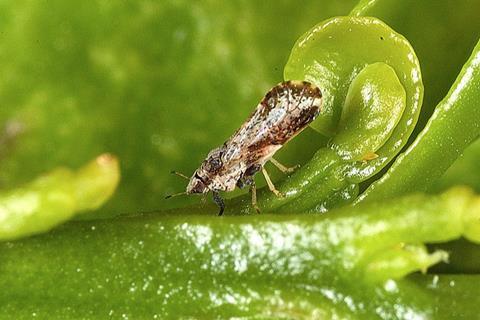A recent study has pinpointed two key enzymes in Citrus sinensis that play a crucial role in the plant’s defense mechanism against the Asian citrus psyllid (ACP), a vector for the lethal huanglongbing (HLB) disease. This research offers a promising lead in the battle against a disease that has caused significant losses in the citrus industry.

The citrus industry faces major challenges from Huanglongbing (HLB) disease, transmitted by the Asian citrus psyllid (ACP). Traditional control methods are often ineffective and environmentally harmful. The need for innovative and sustainable pest management strategies is critical. Due to these challenges, research into the genetic and biochemical defenses of citrus plants has become essential for developing long-term solutions.
Researchers from the Guangdong Academy of Agricultural Sciences and South China Agricultural University published a study in Horticulture Research on April 1, 2024, unveiling the roles of two cytochrome P450 enzymes in Citrus sinensis. The study sheds light on the genetic mechanisms Citrus can employ to defend against ACP infestation.
Cytochrome enzymes
The study identified two cytochrome P450 enzymes, CsCYP82L1 and CsCYP82L2, in Citrus sinensis. These enzymes are responsible for the biosynthesis of the herbivore-induced plant volatiles (HIPVs) DMNT and TMTT. These volatiles are known to repel pests and attract natural enemies of the pests, providing a dual mechanism of defense.
Quantitative real-time PCR (qPCR) analysis showed significant upregulation of CsCYP82L1 and CsCYP82L2 in citrus leaves following ACP infestation. Recombinant yeast expression and enzyme assays confirmed that CsCYP82L1 converts (E)-nerolidol to DMNT, while CsCYP82L2 converts both (E)-nerolidol to DMNT and (E,E)-geranyllinalool to TMTT. Additionally, transgenic citrus calluses overexpressing CsCYP82L1 and CsCYP82L2 demonstrated increased production of these volatiles, reducing ACP preference in behavioral assays.
Plant defense
Dr. Xinxin Zhang, one of the leading researchers, said: “This discovery is a significant step forward in our understanding of plant defense mechanisms. By genetically enhancing the expression of CsCYP82L1 and CsCYP82L2, we can potentially develop citrus varieties that are naturally resistant to ACP, thus reducing the reliance on chemical pesticides and mitigating the spread of HLB.”
The implications of this study are profound for the citrus industry, the authors said. By leveraging the genetic mechanisms identified, it is possible to develop new citrus varieties with built-in resistance to ACP. This could lead to more sustainable citrus farming practices, lower production costs, and reduced environmental impact. The findings also pave the way for similar genetic approaches to combat other pest-related challenges in various crops, enhancing overall agricultural resilience.







No comments yet